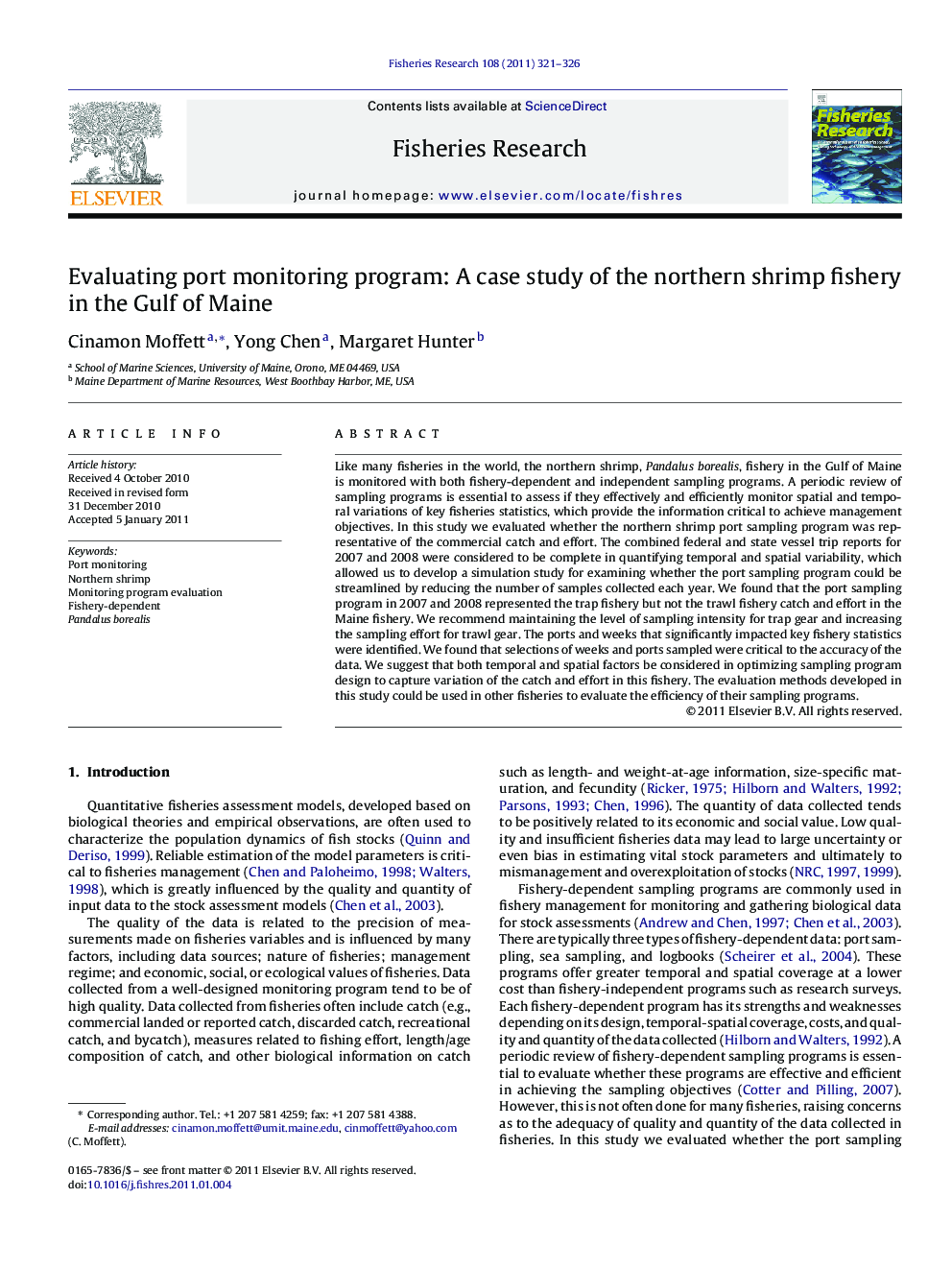| Article ID | Journal | Published Year | Pages | File Type |
|---|---|---|---|---|
| 4543763 | Fisheries Research | 2011 | 6 Pages |
Like many fisheries in the world, the northern shrimp, Pandalus borealis, fishery in the Gulf of Maine is monitored with both fishery-dependent and independent sampling programs. A periodic review of sampling programs is essential to assess if they effectively and efficiently monitor spatial and temporal variations of key fisheries statistics, which provide the information critical to achieve management objectives. In this study we evaluated whether the northern shrimp port sampling program was representative of the commercial catch and effort. The combined federal and state vessel trip reports for 2007 and 2008 were considered to be complete in quantifying temporal and spatial variability, which allowed us to develop a simulation study for examining whether the port sampling program could be streamlined by reducing the number of samples collected each year. We found that the port sampling program in 2007 and 2008 represented the trap fishery but not the trawl fishery catch and effort in the Maine fishery. We recommend maintaining the level of sampling intensity for trap gear and increasing the sampling effort for trawl gear. The ports and weeks that significantly impacted key fishery statistics were identified. We found that selections of weeks and ports sampled were critical to the accuracy of the data. We suggest that both temporal and spatial factors be considered in optimizing sampling program design to capture variation of the catch and effort in this fishery. The evaluation methods developed in this study could be used in other fisheries to evaluate the efficiency of their sampling programs.
